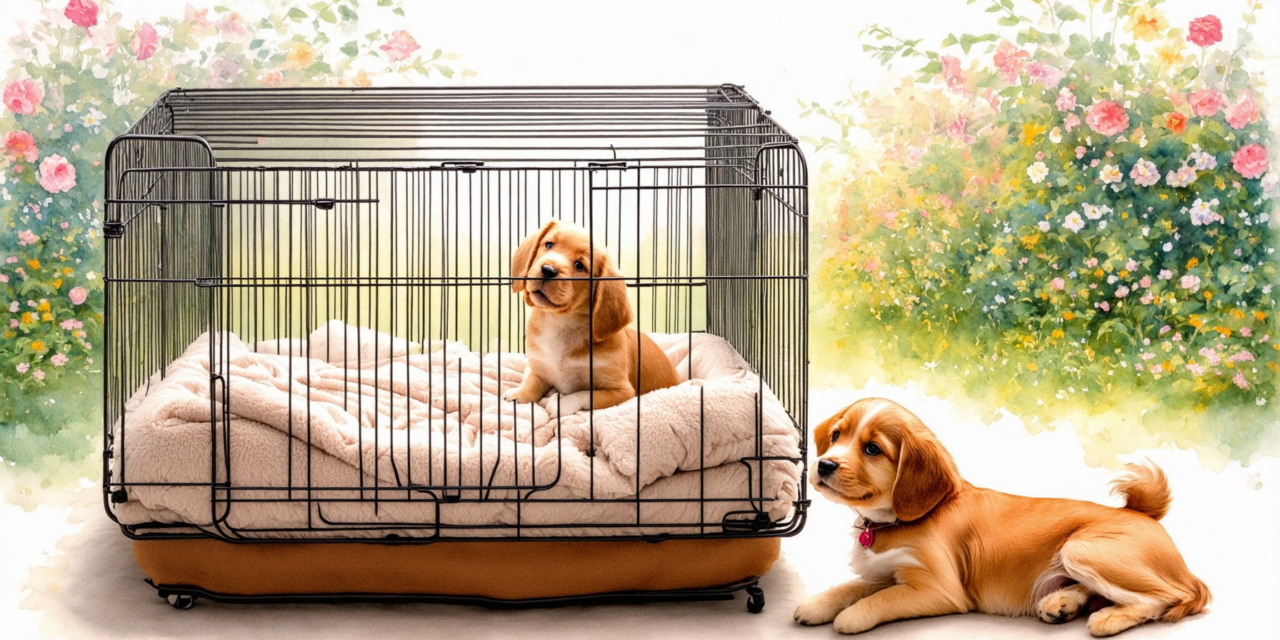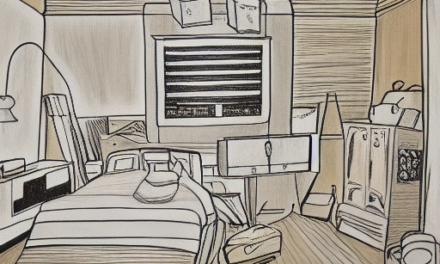Key Takeaways
- Safe Haven: A puppy kennel acts as a secure den, providing a comfortable space for your puppy to retreat and feel safe.
- Effective Housetraining: Crate training encourages puppies to hold their bladder, making it a valuable tool for successful housetraining.
- Health and Safety: Kennels protect puppies from hazards when unsupervised, ensuring their safety and your peace of mind.
- Gradual Introduction: Start kennel training early (around 8-12 weeks) to help puppies form positive associations and reduce anxiety.
- Routine Establishment: Incorporating kennel time into a consistent daily routine promotes structure and enhances training effectiveness.
- Comfort Matters: Ensure the crate is appropriately sized and comfortable with soft bedding to encourage a positive sleeping environment.
- Monitor Stress Signals: Watch for signs of distress and adjust crate training techniques to maintain a positive experience for your puppy.
- Limit Crate Time: Follow the rule of one hour per month of age for crating duration to prevent anxiety and discomfort.
Welcome to our Essential Guide to Puppy Kennel Training, where we delve into the crucial aspects of setting up a puppy kennel, understanding your puppy’s sleep habits, and addressing common concerns such as kennel cough. If you’re a new puppy owner, you may be wondering, Is it OK to put a puppy in a kennel? or How old should a puppy be to go to a kennel? This guide will provide you with valuable insights into the benefits of puppy kennel training, including the ideal age for introducing your puppy to a kennel and best practices for crate training. We will explore essential topics such as choosing the right crate size, setting up a comfortable sleeping environment, and understanding the symptoms and treatment of kennel cough in dogs. By the end of this article, you will be equipped with the knowledge to create a safe and nurturing space for your puppy, ensuring a smooth transition into kennel life.
Is it OK to put a puppy in a kennel?
Using a kennel for a puppy can be beneficial when done correctly. Here are key points to consider:
- Safe and Secure Space: A kennel can serve as a puppy’s “den,” providing a safe, comfortable environment where they can retreat when feeling anxious or overwhelmed. This mimics their natural instinct to seek shelter.
- Housetraining Aid: Crate training is an effective method for housebreaking. Puppies are less likely to soil their den, which encourages them to hold their bladder and bowels longer, aiding in the training process (American Kennel Club).
- Safety During Unsupervised Time: A kennel keeps a puppy safe when you cannot supervise them, preventing access to hazardous items or areas in your home. This is crucial for their safety and your peace of mind.
- Travel and Emergencies: A crate is essential for safe travel, especially in vehicles or during flights. It also provides a secure space during emergency evacuations, ensuring your puppy remains calm and contained (ASPCA).
- Veterinary Visits: Puppies that are crate-trained tend to be more comfortable during veterinary visits and can adapt better to overnight stays if necessary.
- Gradual Introduction: Introduce the kennel positively by associating it with treats, toys, and affection. This helps the puppy view the crate as a safe haven rather than a punishment.
- Appropriate Size: Ensure the kennel is appropriately sized—large enough for the puppy to stand, turn around, and lie down comfortably, but not so large that they can relieve themselves in one corner and sleep in another (PetMD).
- Avoid Punishment: Never use the kennel as a form of punishment. It should be a positive space for the puppy, not a place of confinement for extended periods.
- Adequate Time Outside: Puppies need ample time outside the kennel for exercise, play, and socialization. This is vital for their development and well-being.
- Start Early: Begin crate training as early as possible, ideally around eight weeks of age, when they transition from their mother.
- Limit Crate Time: Puppies should not be left in a crate for longer than their age in months plus one hour (e.g., a 2-month-old puppy should not be crated for more than 3 hours). This helps prevent anxiety and discomfort.
- Frequent Potty Breaks: Take your puppy out for potty breaks regularly, especially after waking up or after being in the crate for a while. This reinforces good habits.
- Monitor for Stress: Watch for signs of stress, such as excessive barking, whining, or destructive behavior. Adjust the crate training process as needed to ensure a positive experience.
By following these guidelines, you can effectively use a kennel to support your puppy’s training and well-being, fostering a healthy and secure environment.
Understanding the Purpose of a Puppy Kennel
A puppy kennel serves multiple purposes that contribute to a puppy’s overall development and safety. Primarily, it acts as a secure space where your puppy can feel safe and protected. This is especially important during the early stages of their life when they are adjusting to a new environment. A well-structured kennel can also aid in house training, as puppies instinctively avoid soiling their sleeping area. By using a kennel, you can create a routine that helps your puppy learn when and where to relieve themselves.
Additionally, a kennel can be a valuable tool for managing your puppy’s behavior when you are not able to supervise them directly. It prevents them from getting into potentially dangerous situations, such as chewing on electrical cords or ingesting harmful substances. Overall, understanding the purpose of a puppy kennel can help you utilize it effectively for training and safety.
Benefits of Using a Puppy Kennel for Training
Utilizing a puppy kennel for training offers several benefits that can enhance your puppy’s learning experience:
- Establishing Boundaries: A kennel helps set clear boundaries for your puppy, teaching them where they can and cannot go. This is crucial for developing good behavior habits.
- Promoting Independence: Spending time in a kennel can help your puppy learn to be independent, reducing separation anxiety as they grow older.
- Encouraging Calmness: A kennel can be a calming space for your puppy, helping them learn to relax and settle down, which is essential for their emotional well-being.
- Facilitating Routine: Incorporating kennel time into your puppy’s daily routine can help them adapt to a structured schedule, making training more effective.
By leveraging the benefits of a puppy kennel, you can create a positive training environment that supports your puppy’s growth and development.

How old should a puppy be to go to kennel?
Puppies should ideally be at least four months old before going to a kennel. This age is crucial for several reasons:
- Vaccination Requirements: By four months, most puppies have completed their initial vaccination series, which typically includes vaccines for distemper, parvovirus, and adenovirus. These vaccinations are essential to protect your puppy from contagious diseases that can be prevalent in kennel environments (American Kennel Club).
- Socialization Skills: At this age, puppies are better equipped to handle the social dynamics of being in a kennel. They have developed essential social skills and are more adaptable to new environments and interactions with other dogs (PetMD).
- Health Considerations: Boarding facilities often require proof of vaccinations and a health check to ensure that all dogs are healthy and free from parasites. This policy helps maintain a safe environment for all pets (ASPCA).
- Behavioral Readiness: Puppies that are four months old are generally more trainable and can follow basic commands, which can ease their transition into a kennel setting. This readiness can reduce stress for both the puppy and the staff at the kennel (Veterinary Partner).
Before boarding your puppy, always check with the specific kennel for their age and vaccination policies, as these can vary. Ensuring your puppy is adequately prepared for the kennel experience is vital for their health and well-being.
Ideal Age for Puppy Kennel Training
The ideal age for puppy kennel training is typically around four months. At this stage, puppies are not only physically ready but also mentally prepared to adapt to kennel life. This age allows them to experience the kennel environment while benefiting from their completed vaccinations, which is crucial for their safety. Additionally, they are more capable of learning and responding to commands, making the training process smoother.
Starting kennel training at this age helps establish a routine and teaches puppies to view the kennel as a safe space rather than a place of confinement. This positive association can lead to better behavior in the kennel and at home.
Signs Your Puppy is Ready for a Kennel
Recognizing when your puppy is ready for a kennel involves observing several key signs:
- Comfort with Alone Time: If your puppy can comfortably spend short periods alone without anxiety, they may be ready for kennel training.
- Basic Training Skills: Puppies that can follow basic commands like “sit” and “stay” are generally more prepared for the structured environment of a kennel.
- Socialization with Other Dogs: If your puppy enjoys playing with other dogs and shows curiosity rather than fear, they are likely ready for the social aspects of kennel life.
- Health Check: A recent vet visit confirming your puppy is healthy and up-to-date on vaccinations is essential before considering kennel boarding.
By ensuring your puppy meets these criteria, you can help facilitate a smooth transition into kennel life, making it a positive experience for both you and your pet.
Should I put my 8 week old puppy in a crate at night?
Yes, it is highly recommended to crate train your 8-week-old puppy and have them sleep in a crate at night. Crate training offers several benefits that contribute to your puppy’s well-being and development:
- Safety and Security: A crate provides a safe and secure environment for your puppy, protecting them from potential hazards in your home while you sleep. Puppies are naturally den animals, and a crate can mimic a den-like space, making them feel secure.
- Potty Training Aid: Crate training is an effective tool for potty training. Puppies instinctively avoid soiling their sleeping area, which encourages them to hold their bladder until they are let outside. According to the American Kennel Club (AKC), this method can significantly reduce accidents in the house.
- Establishing Routine: Using a crate helps establish a consistent nighttime routine, which is crucial for young puppies. A predictable schedule can help your puppy learn when it’s time to sleep, promoting better sleep habits.
- Reducing Anxiety: Crate training can help reduce separation anxiety in puppies. By spending time in their crate during the day, they learn to feel comfortable being alone, which can ease their transition to sleeping in the crate at night.
- Behavior Management: A crate can prevent unwanted behaviors during the night, such as chewing on furniture or getting into trash. It provides a controlled environment where your puppy can rest without engaging in destructive activities.
To ensure a positive crate training experience, follow these tips:
- Introduce the Crate Gradually: Allow your puppy to explore the crate during the day, using treats and toys to create a positive association.
- Use Comfortable Bedding: Make the crate inviting with soft bedding and a few safe toys.
- Limit Crate Time: Puppies have small bladders and should not be crated for extended periods. At 8 weeks, aim for no more than 2-3 hours during the day and overnight.
- Be Patient: It may take time for your puppy to adjust to sleeping in a crate. Consistency and positive reinforcement are key.
Crate Training a Puppy: Nighttime Considerations
When crate training a puppy, especially at 8 weeks old, nighttime considerations are crucial for success. Here are some key points to keep in mind:
- Location of the Crate: Place the crate in a quiet, comfortable area of your home, preferably close to where you sleep. This proximity can help your puppy feel secure and reduce anxiety.
- Nighttime Routine: Establish a calming nighttime routine that includes a bathroom break before bed. This helps your puppy understand that it’s time to settle down for the night.
- Monitoring: Be prepared for your puppy to whine or bark during the first few nights. This is normal as they adjust. Avoid letting them out immediately; wait for a moment of quiet before responding.
- Consistency is Key: Stick to the same routine each night to help your puppy learn when it’s time to sleep. Consistency will aid in their adjustment to crate training.
Setting Up a Comfortable Puppy Crate for Sleep
Creating a comfortable environment in your puppy’s crate is essential for successful crate training. Here are some tips for setting up a cozy sleeping space:
- Choose the Right Crate Size: Ensure the crate is appropriately sized for your puppy. It should be large enough for them to stand, turn around, and lie down comfortably, but not so large that they can use one corner as a bathroom.
- Comfortable Bedding: Use soft, washable bedding to make the crate inviting. A blanket or a dog bed can provide comfort and warmth.
- Safe Toys: Include a few safe toys to keep your puppy occupied and help them feel more at home in their crate.
- Temperature Control: Ensure the crate is in a temperature-controlled area, away from drafts or direct sunlight, to keep your puppy comfortable while they sleep.
For more detailed guidance on crate training and puppy care, you can refer to resources from the American Kennel Club (AKC) and the ASPCA. These organizations provide valuable insights into effective training methods and puppy development.
What is a good age to kennel train a puppy?
Determining the right age to begin puppy kennel training is crucial for setting your furry friend up for success. The optimal age to start crate training a puppy is generally between 8 to 12 weeks old. At this developmental stage, puppies are particularly receptive to learning and can adapt quickly to new environments. Here are several important considerations for effective crate training:
- Early Exposure: Introducing the crate early helps puppies form positive associations with it as a safe and comfortable space. This can reduce anxiety and promote a sense of security.
- Gradual Introduction: Start by allowing your puppy to explore the crate with the door open. Use treats and toys to encourage them to enter voluntarily, creating a positive experience.
- Short Durations: Initially, keep your puppy in the crate for short periods, gradually increasing the duration as they become more comfortable. This helps them adjust without feeling confined.
- Consistency: Establish a consistent routine for crate training, including regular feeding and bathroom breaks. This helps your puppy learn when to expect crate time and when to be let out.
- Positive Reinforcement: Always reward your puppy with praise or treats when they enter the crate willingly or remain calm inside. This reinforces good behavior and encourages them to view the crate positively.
- Avoid Negative Associations: Never use the crate as a form of punishment. This can lead to fear and anxiety, making crate training more challenging.
- Age Considerations: While 8 to 12 weeks is ideal, older puppies can still be crate trained. However, it may take longer for them to adjust, especially if they have had negative experiences with confinement in the past.
Research indicates that early training can lead to better behavioral outcomes in adult dogs (American Kennel Club, 2023). For more comprehensive guidance on puppy training, consider consulting resources from reputable organizations such as the ASPCA or the American Kennel Club.
Factors Influencing the Timing of Kennel Training
Several factors can influence the timing of kennel training for your puppy. Understanding these can help you tailor the training process to your puppy’s unique needs:
- Temperament: Some puppies are naturally more adaptable and may take to kennel training more quickly than others. Assess your puppy’s personality to determine the best approach.
- Previous Experiences: If your puppy has had negative experiences with confinement, it may take longer for them to adjust. Patience and positive reinforcement are key in these cases.
- Breed Characteristics: Certain breeds may have different needs and responses to kennel training. Research your puppy’s breed to understand their specific requirements.
- Household Environment: A calm and structured home environment can facilitate quicker adaptation to kennel training. Ensure that your puppy feels safe and secure in their surroundings.
By considering these factors, you can create a more effective puppy crate training plan that aligns with your puppy’s developmental stage and individual personality. For additional insights on crate training, check out our blog for expert tips and advice.

Should I Lock My Puppy in His Crate at Night?
Yes, locking your puppy in the crate at night can be beneficial for both safety and house training. Here are some key considerations to ensure a positive experience for your puppy:
- Safety and Security: Crating your puppy provides a safe environment, protecting them from potential hazards in the home during the night. Puppies are naturally den animals, and a crate can offer a sense of security.
- Comfort: Make sure the crate is comfortable by adding soft bedding and ensuring it is the right size. Your puppy should be able to stand, turn around, and lie down comfortably. A crate that is too large may encourage them to eliminate inside.
- Location: Place the crate in a quiet area of your home, preferably near your bedroom. This proximity can help your puppy feel more secure and reduce anxiety, as they can hear and sense your presence.
- Consistent Routine: Establish a consistent bedtime routine to help your puppy adjust to crate training. This can include a final bathroom break, some quiet playtime, and a calming activity before bed. Consistency is key to helping your puppy understand when it’s time to sleep.
- Gradual Introduction: If your puppy is not used to the crate, gradually introduce them to it during the day with positive reinforcement. Use treats and praise to create a positive association with the crate.
- Duration: Puppies have limited bladder control, so it’s important to consider their age when determining how long they can stay in the crate. As a general rule, a puppy can hold their bladder for about one hour for each month of age, up to a maximum of about 8 hours overnight for older puppies.
- Monitoring: Pay attention to your puppy’s behavior. If they are excessively barking or whining, it may indicate that they need to go outside or that they are not yet comfortable in the crate.
- Professional Guidance: If you encounter challenges with crate training, consider seeking advice from a professional dog trainer or behaviorist. Resources such as the American Kennel Club provide valuable insights on crate training techniques.
Best Practices for Overnight Crate Use
To ensure a successful overnight crate experience for your puppy, follow these best practices:
- Choose the Right Crate Size: Select a puppy crate that is appropriate for your puppy’s size. A crate that is too large can lead to accidents, while one that is too small can be uncomfortable. Refer to dog crate sizes for guidance.
- Establish a Nighttime Routine: Create a calming routine that signals bedtime. This can include a final potty break, quiet time, and a consistent bedtime.
- Use Positive Reinforcement: Reward your puppy for entering the crate willingly. This can help them associate the crate with positive experiences.
- Limit Crate Time: Be mindful of how long your puppy is in the crate. Young puppies should not be crated for extended periods, especially overnight.
- Monitor Comfort Levels: Ensure your puppy is comfortable and not too hot or cold. Adjust bedding and crate placement as needed.
Where should a puppy sleep at night?
When determining where a puppy should sleep at night, it’s essential to consider their comfort, security, and your household dynamics. Here are key recommendations based on expert advice and recent studies:
- Proximity to Owners: Initially, it’s beneficial to have your puppy sleep in your bedroom. This arrangement can provide reassurance and help ease the transition from their previous environment. According to the American Kennel Club, having your puppy close can reduce anxiety and promote a sense of safety.
- Crate Training: Utilizing a crate can be an effective method for training your puppy to sleep through the night. A crate should be appropriately sized—large enough for your puppy to stand, turn around, and lie down comfortably. This method not only aids in house training but also creates a secure space for your puppy. The Humane Society emphasizes that a crate can help puppies develop a routine and feel more secure.
- Comfortable Bedding: Ensure that your puppy has a comfortable bed or blanket in their sleeping area. Soft bedding can help them feel cozy and encourage restful sleep. Consider using materials that are easy to clean and hypoallergenic to promote a healthy sleeping environment.
- Gradual Transition: Once your puppy is comfortable sleeping in your bedroom, you can gradually transition them to their permanent sleeping area. This could be a designated space in another room or a specific area in your home. The transition should be gradual to avoid overwhelming your puppy.
- Routine and Consistency: Establishing a consistent bedtime routine can signal to your puppy that it’s time to sleep. This might include a short walk, playtime, or quiet time before bed. Research from the Journal of Veterinary Behavior suggests that routines can help reduce anxiety in dogs.
- Environmental Considerations: Ensure the sleeping area is quiet, dark, and free from disturbances. Puppies are sensitive to noise and light, which can disrupt their sleep. Using blackout curtains and white noise machines can create a more conducive sleeping environment.
- Monitoring Health: If your puppy struggles to sleep or shows signs of distress, consult with a veterinarian. Sleep issues can sometimes indicate underlying health problems.
By following these guidelines, you can help your puppy develop healthy sleep habits that will benefit both them and your household. For further insights on pet care and training, resources such as the American Kennel Club and the Humane Society provide valuable information.
Choosing the Right Location for Your Puppy’s Crate
When selecting a location for your puppy’s crate, consider the following factors:
- Quiet Area: Place the crate in a quiet part of your home to minimize disturbances. Avoid high-traffic areas where noise and activity could disrupt your puppy’s sleep.
- Temperature Control: Ensure the crate is in a temperature-controlled environment. Puppies can be sensitive to extreme temperatures, so a comfortable climate is essential.
- Visibility: Puppies often feel more secure when they can see their owners. Positioning the crate in a common area can help them feel included while still having their own space.
- Safety: Make sure the area around the crate is free from hazards. Remove any items that could potentially harm your puppy while they are in their crate.
Indoor vs. Outdoor Puppy Kennel Options
Deciding between an indoor or outdoor puppy kennel involves weighing the pros and cons of each option:
- Indoor Puppy Kennels: These provide a controlled environment, protecting your puppy from weather extremes and allowing for easy supervision. Indoor kennels can also help with crate training, as they can be placed in a familiar area of the home.
- Outdoor Puppy Kennels: Outdoor options can offer more space for your puppy to play and explore. However, they require careful consideration of safety, including secure fencing and protection from the elements. Ensure that outdoor kennels are shaded and have proper ventilation.
Ultimately, the choice between indoor and outdoor kennels should be based on your living situation, your puppy’s needs, and your ability to supervise them effectively.
Puppy kennel indoor vs. outdoor: Which is better?
When deciding between an indoor or outdoor puppy kennel, it’s essential to consider various factors that influence your puppy’s comfort, safety, and training. Both options have their unique advantages and disadvantages, which can impact your puppy’s well-being and your training efforts.
Pros and Cons of Indoor Puppy Kennels
Indoor puppy kennels offer several benefits that can enhance your puppy’s training experience:
- Climate Control: Indoor kennels provide a stable environment, protecting your puppy from extreme weather conditions, such as heat, cold, or rain.
- Social Interaction: Keeping your puppy indoors allows for more frequent interaction with family members, which is crucial for socialization and bonding.
- Training Opportunities: Indoor kennels can be strategically placed near common areas, making it easier to incorporate crate training into your daily routine.
However, there are some drawbacks to consider:
- Space Limitations: Indoor kennels may require more space than you have available, especially in smaller homes or apartments.
- Odor Control: Indoor kennels can accumulate odors if not cleaned regularly, which may be unpleasant for both you and your puppy.
Outdoor Puppy Kennel Ideas for Comfort and Safety
Outdoor puppy kennels can also be a great option, particularly if you have ample outdoor space. Here are some advantages:
- Natural Environment: Outdoor kennels allow your puppy to enjoy fresh air and natural sunlight, which can be beneficial for their overall health.
- Space to Play: An outdoor kennel can provide more space for your puppy to move around and play, reducing boredom and promoting physical activity.
- Less Mess Indoors: Keeping your puppy outside can help minimize messes in your home, especially during potty training.
On the downside, outdoor kennels come with challenges:
- Weather Exposure: Puppies may be exposed to harsh weather conditions, which can be harmful if they are not properly sheltered.
- Security Concerns: Outdoor kennels must be secure to prevent escapes or encounters with other animals.
Ultimately, the choice between an indoor or outdoor puppy kennel depends on your living situation, your puppy’s needs, and your training goals. Consider these factors carefully to create the best environment for your puppy’s growth and development.













